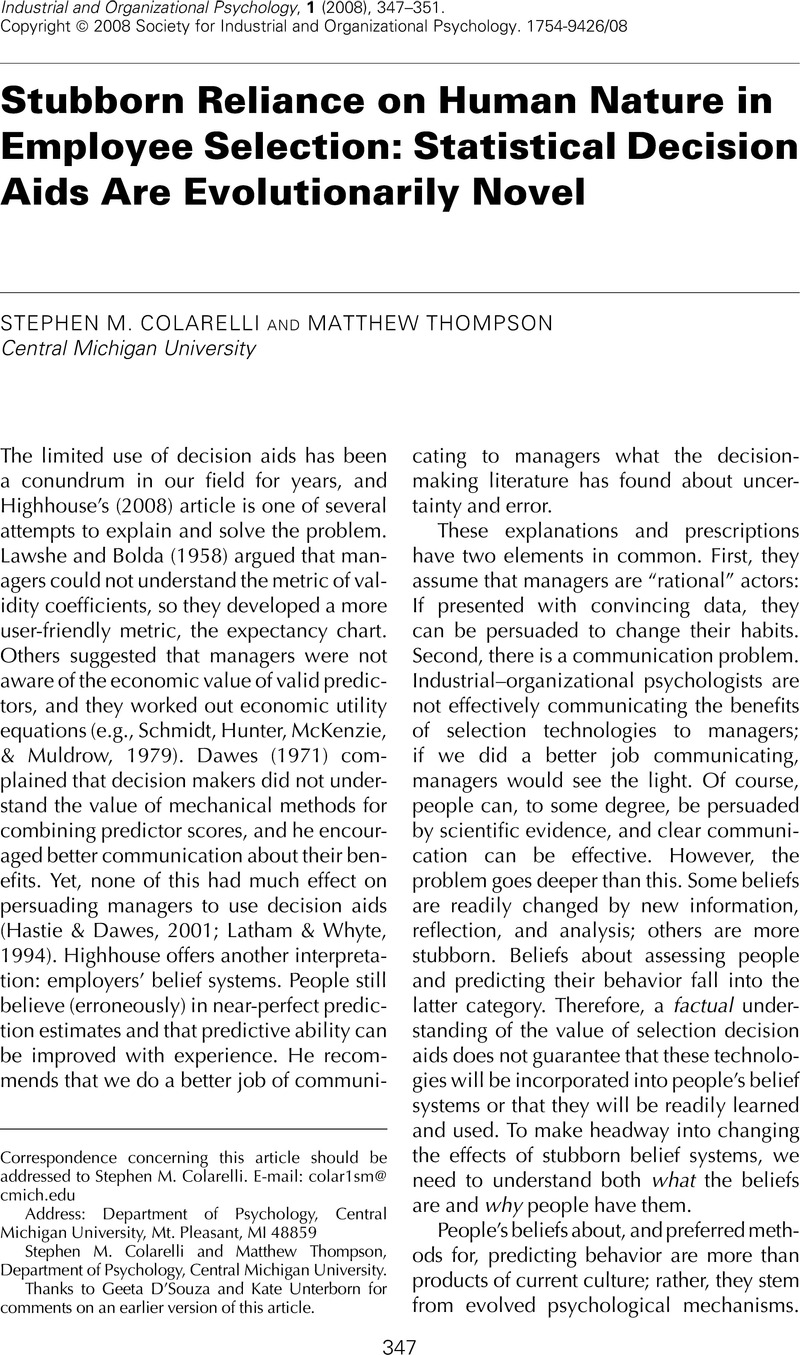Crossref Citations
This article has been cited by the following publications. This list is generated based on data provided by Crossref.
Highhouse, Scott
2008.
Facts Are Stubborn Things.
Industrial and Organizational Psychology,
Vol. 1,
Issue. 3,
p.
373.
Hollenbeck, George P.
2009.
Executive Selection—What's Right … and What's Wrong.
Industrial and Organizational Psychology,
Vol. 2,
Issue. 2,
p.
130.
Klehe, Ute-Christine
2011.
Scientific Principles Versus Practical Realities: Insights From Organizational Theory to Individual Psychological Assessment.
Industrial and Organizational Psychology,
Vol. 4,
Issue. 3,
p.
311.
Langhammer, Kristina
Bernhard‐Oettel, Claudia
and
Hellgren, Johnny
2012.
Individual Determinants of Behavioral Intentions: What tells us that practitioners really want to change hiring strategies?.
International Journal of Selection and Assessment,
Vol. 20,
Issue. 4,
p.
453.
Miles, Andrew
and
Sadler-Smith, Eugene
2014.
“With recruitment I always feel I need to listen to my gut”: the role of intuition in employee selection.
Personnel Review,
Vol. 43,
Issue. 4,
p.
606.
Burton, Jason W.
Stein, Mari‐Klara
and
Jensen, Tina Blegind
2020.
A systematic review of algorithm aversion in augmented decision making.
Journal of Behavioral Decision Making,
Vol. 33,
Issue. 2,
p.
220.
Vincent, Vinod U.
Guidice, Rebecca M.
and
Mero, Neal P.
2021.
Should you follow your gut? The impact of expertise on intuitive hiring decisions for complex jobs.
Journal of Management & Organization,
p.
1.
Gubaydullina, Zulia
Judek, Jan René
Lorenz, Marco
and
Spiwoks, Markus
2022.
Comparing Different Kinds of Influence on an Algorithm in Its Forecasting Process and Their Impact on Algorithm Aversion.
Businesses,
Vol. 2,
Issue. 4,
p.
448.
Colarelli, Stephen M.
Mirando, Tyler J.
Han, Kyunghee
Li, Norman P.
Vespi, Carter
Klein, Katherine A.
and
Fales, Charles P.
2022.
Responses to COVID-19 Threats: an Evolutionary Psychological Analysis.
Evolutionary Psychological Science,
Vol. 9,
Issue. 2,
p.
186.
Freisinger, Elena
Unfried, Matthias
and
Schneider, Sabrina
2024.
The AI‐augmented crowd: How human crowdvoters adopt AI (or not).
Journal of Product Innovation Management,
Vol. 41,
Issue. 4,
p.
865.
Rabinovitch, Hagai
Budescu, David V.
and
Meyer, Yoella Bereby
2024.
Algorithms in selection decisions: Effective, but unappreciated.
Journal of Behavioral Decision Making,
Vol. 37,
Issue. 2,



